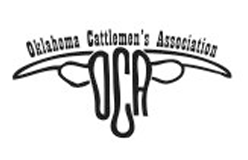
In today’s beef buzz, senior farm and ranch broadcaster Ron Hays speaks with Dan Halstrom, president of the USMEF, who emphasized that global demand for U.S. red meat remains “very, very good, if not record-breaking,” even amid political and economic turbulence. He noted especially strong performance in markets tied to existing free trade agreements, saying regions such as Canada and Mexico under USMCA account for about 28% of U.S. beef and pork exports and are “growing, and have been for several years now.”
Halstrom highlighted that countries with long-standing trade agreements—Central America under CAFTA; Colombia and Chile; and South Korea under KORUS—continue to deliver robust results. Despite record-high beef prices, he said these partners “continue to buy, demanding our quality products.” Alongside these mature markets, he underscored the importance of expanding in developing regions, particularly Southeast Asia, Central America, and Africa, where USMEF sees strong long-term potential.
The most significant challenge he identified is restricted U.S. beef access in China. Halstrom called the situation “extremely frustrating,” pointing out that China was a $1.6 billion market last year and that customers like Sam’s Club are ready to resume chilled beef purchases “tomorrow” if the relisted plants are approved. He stressed that restoring access is the top priority with USTR, noting the solution could come “with a flip of a switch tomorrow, if they so choose.”
While waiting for China’s return, Halstrom explained the need to redirect products—particularly variety meats—into alternative markets. China is the largest customer for these items, so finding new destinations is essential. He said the lack of access is “expediting that momentum, or that urgency” to develop outlets in Mexico, Peru, Central America, and Africa for items like tripe, kidneys, and livers. Although China cannot be replaced quickly, he believes that when it eventually reopens, the U.S. will be “much well positioned with a more diverse portfolio.”
Halstrom described strong global interest in U.S. quality and consistency, saying customers “are wanting quality even if it costs more.” Demand for upper Choice and Prime beef is rising worldwide. At the same time, consumer habits are changing rapidly: convenience products, meal kits, case-ready items, and home-meal-replacement options are growing across markets. He noted Korea as the leading example, where more than 40% of purchases are now through e-commerce, adding, “Everything’s moving fast, very fast.”
Finally, Halstrom said the global consumer mindset increasingly mirrors U.S. trends around nutrition and the “power of protein.” This applies not only to muscle cuts but also to variety meats, which he said carry strong nutritional appeal in markets such as Peru, Chile, Mexico, Africa, and Japan. He emphasized that “people are giving more focus on health, more focus on nutrition,” and U.S. beef, pork, and lamb remain central to that demand.
The Beef Buzz is a regular feature heard on radio stations around the region on the Radio Oklahoma Ag Network and is a regular audio feature found on this website as well. Click on the LISTEN BAR for today’s show and check out our archives for older Beef Buzz shows covering the gamut of the beef cattle industry today.

















